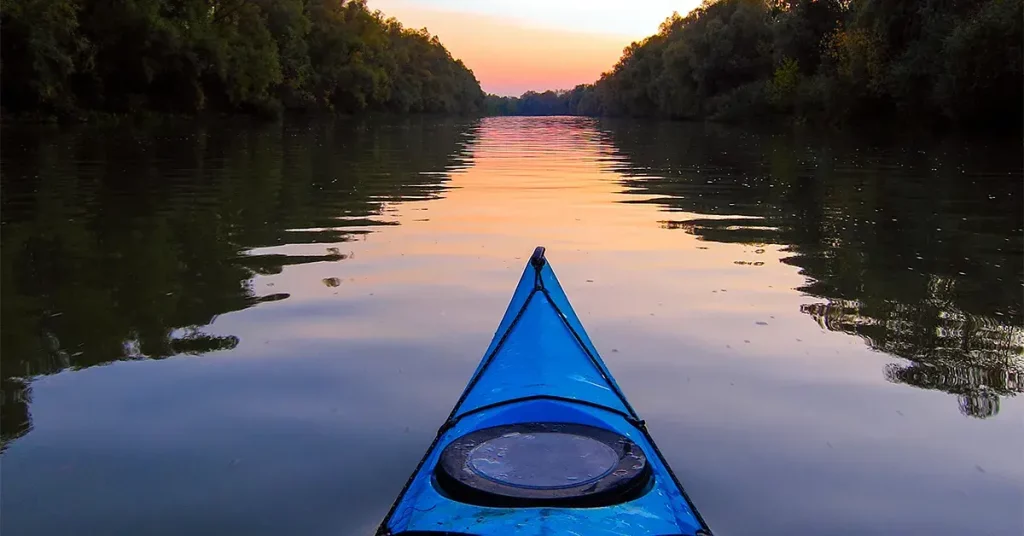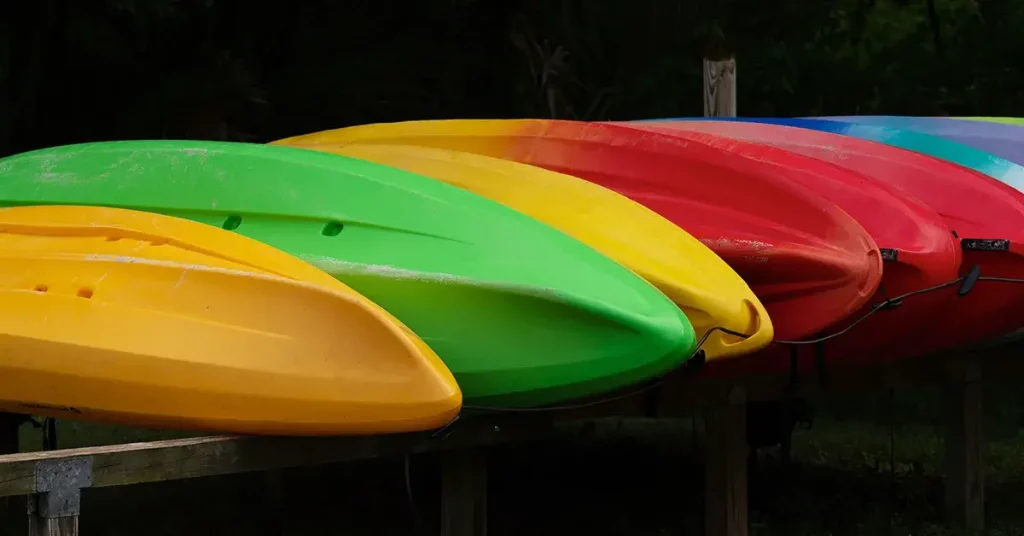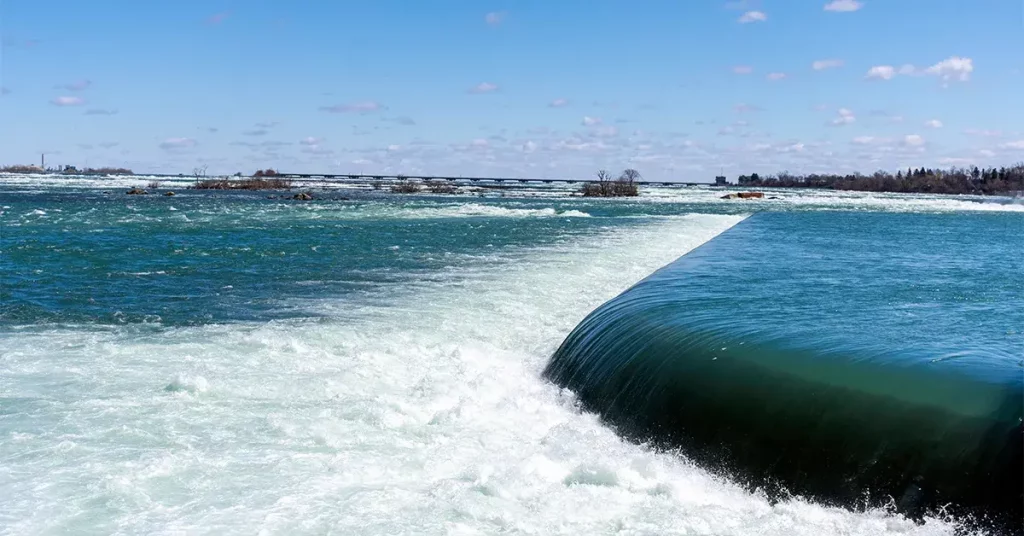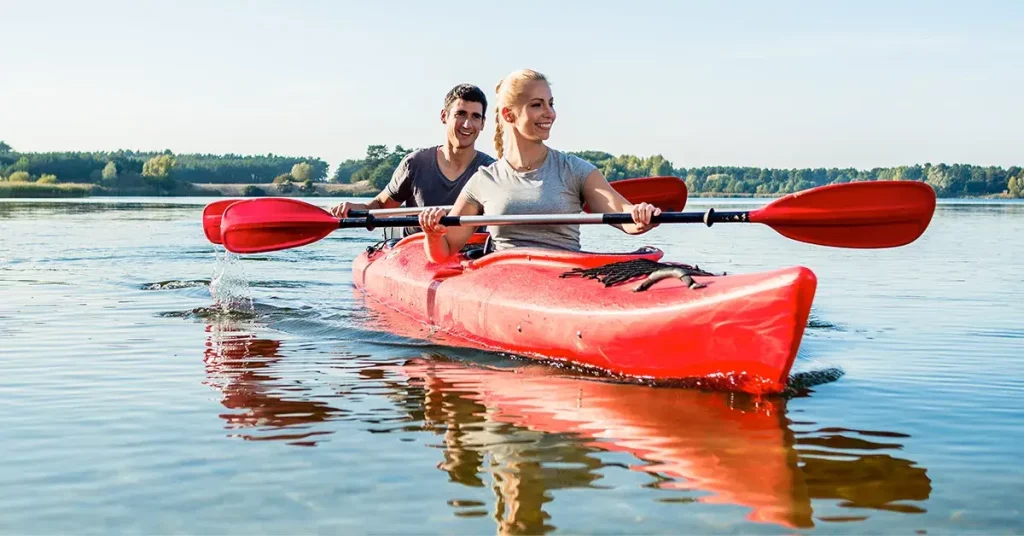So you’ve loaded up your kayak with the latest and greatest gear, you’re about to shove off and begin a 20 mile trip, and you think to yourself – how long is this going to take? How long does it take to kayak a mile anyway?
The answer to this frequently asked question is not that cut and dry. It depends on a number of variables, from your kayak type – to experience level – to the wind and weather conditions.
Factors to Consider
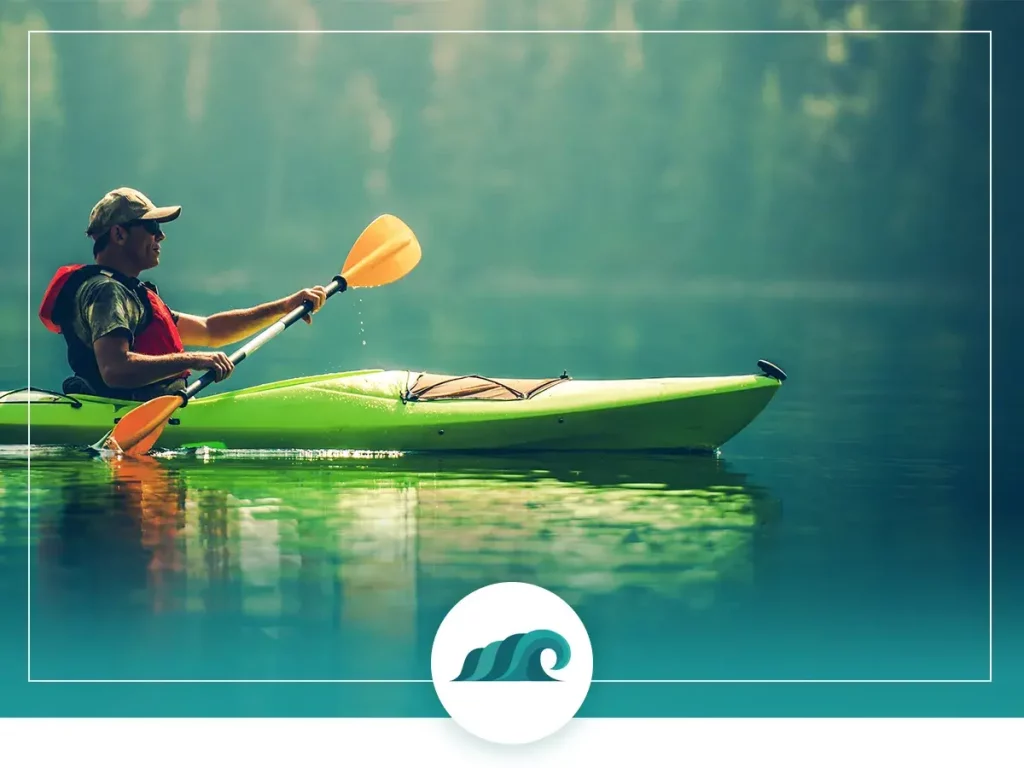
Having a good idea of your average kayak speed is important for planning out any kayak trip, so let’s examine some of the determining factors.
Kayak Type
The type of boat you plan on using will have a major impact on your kayak’s speed. Wider kayaks will unavoidably be slower than narrower kayaks. Similarly, longer kayaks are typically faster than shorter kayaks. You can check out my detailed explanation of kayak dimensions here.
Long, sleek touring kayaks are the fastest type of kayak available, followed by shorter recreational kayaks and then wide, stable fishing kayaks.
Sit-inside kayaks also tend to be faster than the sit-on-top style. This is because their lower center of gravity makes paddling more efficient, and creates less wind resistance.
Paddle
Does the paddle you use really make that much of a difference?
Actually, Yes!
This often neglected component can have a major impact on your kayaking performance. Selecting a paddle that is tailored to your height, boat width, shoulder width and personal preference will make your paddling far more efficient.
A lightweight composite or fiberglass paddle will also enable you to paddle for longer without getting fatigued – which will increase your per mile paddling speed.
Experience
You wouldn’t walk into a gym for the first time and expect to deadlift the same weight as Arnold Schwarzenegger! You would need years of training and experience before you could expect to approach that level. The same principle applies to kayaking.
Beginners often find they fatigue quickly, particularly if they’re not accustomed to using their kayaking muscles. So if you’re just starting out, you’ll probably need to stop every so often and let your back and shoulders recover.
As you gain experience, not only will your muscular endurance increase, but your technique will (hopefully) become more efficient. With enough practice you’ll be able to paddle for hours without needing to stop and recover.
Conditions
Naturally the calmer and flatter the water is – the easier it will be to paddle. Choppy ocean water will slow you down and make paddling more difficult. It’s important to factor in any ocean currents as well.
When river kayaking, paddling down a river with a fast flowing current can greatly increase your speed. On the other hand, paddling upstream will not only slow you down significantly, it can be extremely exhausting.
If you’ve never tried paddling against the current, imagine cycling up a hill with no brakes. The moment you stop to catch your breath you’ll start to move backwards.
Weather and wind can also have a major effect on your kayaking speed. Despite not having sails, kayaks will catch the wind in either direction. That’s why it’s always a good idea to check your local weather conditions before embarking on any longer kayak trip.
Gear & Passengers
The amount of weight in your kayak is another major factor in determining your speed per mile. If you’re going on an excursion for several days – and loaded up with tents, sleeping bags, food and water – you’re not going to be as fast as if you go for a quick paddle in an empty boat.
Kayaking with younger kids, or with your dog (especially a big dog), will also slow you down significantly. The extra weight in your boat will act like an anchor slowing you down.
Average Kayak Speed
Keeping in mind all the above factors, a beginner kayaker in a recreational polyethylene kayak, paddling on calm flat water, can paddle at around 3 miles an hour (5 Km/h). They likely won’t be able to sustain that pace for long stretches of time though.
If you take into account time for water breaks, enjoying the scenery, and recovering, the average would be closer to 2 miles an hour (3.2 Km/h). That means it would take roughly 30 minutes to kayak each mile.
A more experienced kayaker using a narrower touring boat could expect to achieve 4 – 5 miles an hour (6.5 – 8 Km/h). This translates to 12 to 15 minutes to kayak each mile.
Kayak Top Speed
Interestingly, the maximum speed possible on a kayak before planing is:
Maximum Speed = 34 x (square root of kayak hull length at the waterline)
This speed is referred to as the maximum hull speed. It effectively means shorter kayaks will reach their maximum speed before the paddler has exerted their maximum effort.
How Far Can I Kayak in a Day?
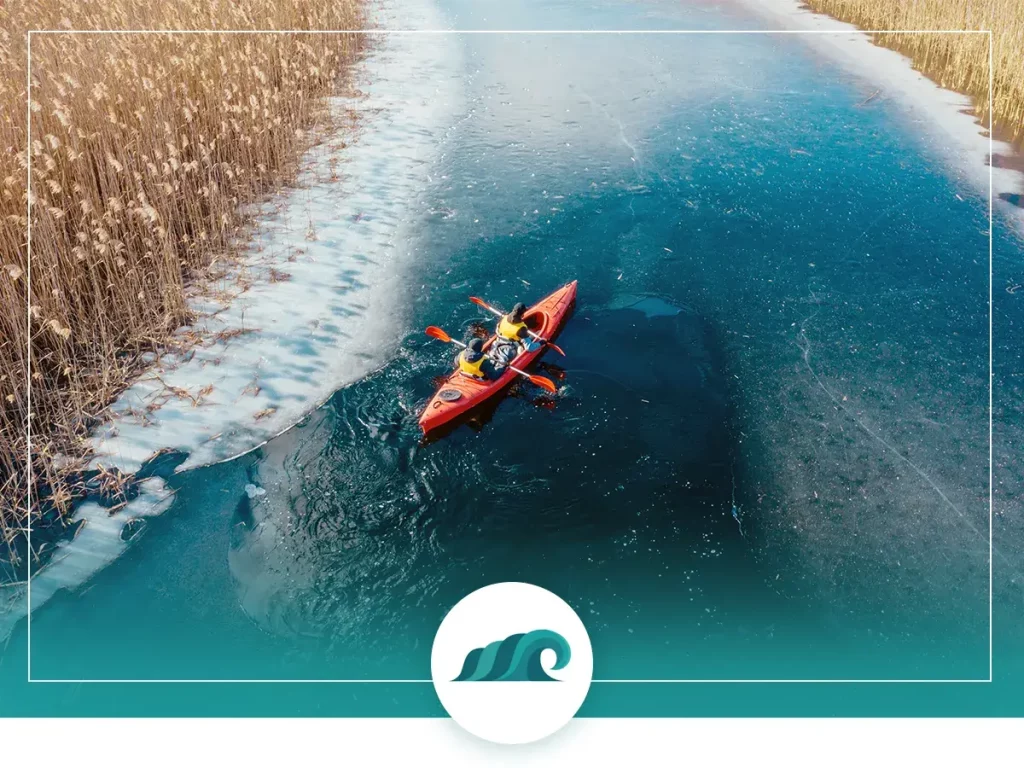
Now that you’ve got a pretty good idea of how long it takes to kayak a mile, the next step is figuring out how far you can kayak in a day.
If you’re planning out a longer kayaking trip, having a rough estimate of your per mile speed is a good start. You could get a more exact number by using a GPS watch or an app like Routie.
Don’t forget to check weather and wind conditions before embarking. There are several excellent apps out now that provide up to date information on your local paddling conditions.
Next, map out the miles for your trip taking into account time for breaks and unforeseen circumstances. Allotting 30 minutes per mile is generally a good estimate.
Lastly, don’t forget to have fun and enjoy! Being out on the water is all about enjoying the great outdoors, planning out every tiny detail can take away from spontaneous enjoyment.

